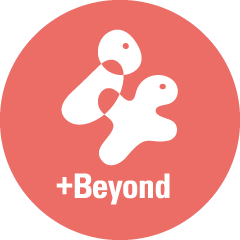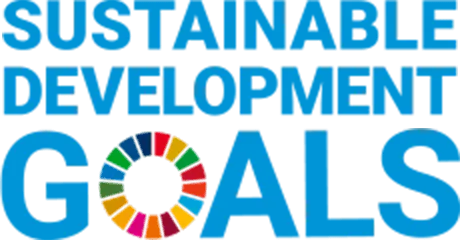Inochi Declaration
Humans are dynamic entities who co-create value with others in pursuit of the common good of the future. Let us become individuals who feel before thinking, empathize with differences, engage in dialogue, encounter leaps of insight, and persevere together as a united scrum.
The Knowledge-Creation Theory, constructed and advocated by the late Professor Ikujiro Nonaka, elucidates the principles of organizational innovation through the creation of collective knowledge. At its core lies the view that humans are dynamic entities who create meaning through interactions with others toward the common good of the future. Human beings live to create new meanings. Knowledge is the meaning that is subjectively created through relationships, and the dynamic process of co-creating value for the common good.
Modern management tends to be biased toward formal logic and numerical analysis.
When explicit knowledge predominates, the innate human wisdom for survival—our wild instincts—deteriorates, and new knowledge fails to emerge. Humans feel subjectively, through direct experience, the meaning of “here”, “now”, and “me”. Science is the process of transforming these vivid subjective experiences into objective knowledge that can be shared anytime, anywhere, with anyone.
Knowledge creation is the spiral process of the mutual transformation of tacit and explicit knowledge. Tacit knowledge, including the unconscious, is the source of explicit knowledge. The SECI model (Figure 1) explains the principles of the tacit–explicit knowledge conversion process at the levels of individuals, groups, organizations, and society/environment. By standing in the other’s shoes, empathizing, sharing and co-creating tacit knowledge (Socialization); capturing the essence through dialogue and converting it into words and concepts (Externalization); mobilizing all knowledge to organize these concepts into theories, strategies, and narratives (Combination); and embodying the collective knowledge through practice (Internalization)—this dynamic spiral allows organizational innovation to occur.
For example, Eisai Co., Ltd., a pharmaceutical company, has applied the Knowledge-Creation Theory to management practices. Under the leadership of the Knowledge Creation Department directly under the president, employees globally dedicate 1% of their working time to activities that initiate the Socialization phase of the SECI model, regardless of their job type or department.

Figure 1: SECI Model

Figure 2: “Practical Wisdom Leadership”
The concept of the common good provides direction to the vector of the organizational knowledge creation process and serves as the daily standard for judgment. It articulates a moral purpose—for the benefit of society and people—and serves to unify those who resonate with this ideal into a cohesive and committed force. Indeed, Eisai formally included its corporate philosophy in its articles of incorporation following the 2005 general shareholders’ meeting and revised it again in 2022. Through the practices of each employee, they continue to breathe life into the philosophy, grounding it not in slogans but in vibrant real-world contexts.
Empathy mediates between individual subjectivity and the objectivity of society and organizations. It is vital to create shared time-space among participants and engage in exhaustive, earnest dialogue until reaching a selfless state where we share the feeling of “We can only express in this way.” Through empathy, it becomes necessary to cultivate “intellectual combat” spaces within and outside organizations where people engage in uncompromising, heated discussions without self-censorship or compromise. This approach liberates and concentrates each individual’s rich potential and enables the decentralized and autonomous practice of collective knowledge creation through all-handson-deck management by all across boundaries.
New meaning cannot be generated from trade-offs that discard opposites or from simple averaging and prearranged harmony between dichotomies. To generate breakthrough ideas that leap beyond existing frameworks, it is crucial to approach matters through “dynamic duality”—recognizing and seriously confronting the contradictions and tensions between extremes, including tacit knowledge. Facing conflict and contradiction head-on allows us to co-create new narratives and achieve self-transformation toward the common good.
What facilitates the organizational knowledge creation process is “practical wisdom leadership” (Phronesis) (Figure 2). Practical wisdom, as defined by Aristotle, is prudent judgment applied in practice. Each individual must have the resolve to live wisely (a way of life)—making the best judgments and taking timely actions dynamically within real-world contexts toward the common good of the future.
The Inochi Forum will carry forward and further develop Professor Nonaka’s Knowledge-Creation Theory, expanding the arenas where individuals co-create value together toward the common good of the future.
[References]
・The Ikujiro Nonaka Institute
https://ikujiro-nonaka.institute/
・Nonaka Laboratory, Graduate School of International Corporate Strategy (ICS), Hitotsubashi University
https://www.ics.hub.hit-u.ac.jp/jp/faculty/profile/nonaka_ikujiro.html
・Nonaka Institute of Knowledge
https://nonaka-ik.org
・Eisai Co., Ltd. Knowledge Creation Activities
https://www.eisai.co.jp/hhc/activity/index.html
[Action Platform]
Economy, Employment and Poverty/Diversity and Inclusion
[SDGs]


